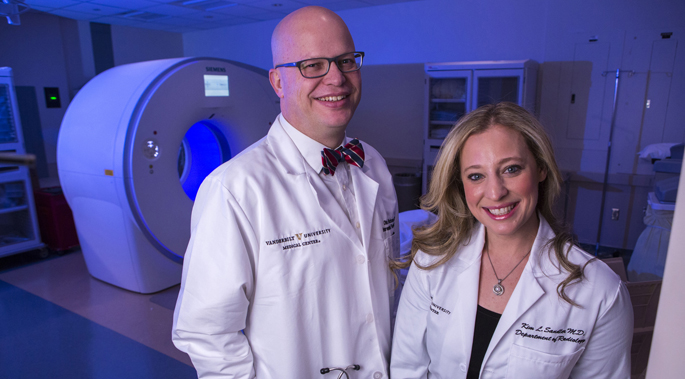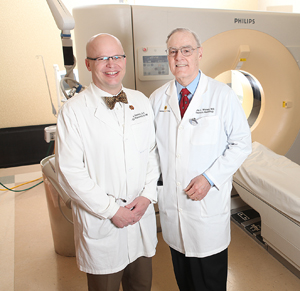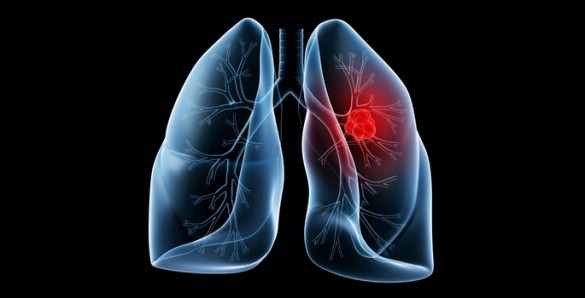
Vanderbilt University Medical Center’s (VUMC) Lung Screening Program for patients at high risk for cancer recently reached a milestone, enrolling more than 700 patients and performing more than 1,000 CT screening examinations.
VUMC’s program has been designated a Lung Cancer Screening Program by the American College of Radiology, a voluntary program that recognizes facilities that have committed to practice safe, effective diagnostic care for individuals at the highest risk for lung cancer.
Lung cancer is one of the most deadly forms of cancer because the disease is often caught at a late stage. Lung screening using low-dose CT scans for high-risk patients can detect cancer at a much earlier stage when the disease can be cured or treatment is more effective.
Kim Sandler, MD, assistant professor of Radiology and Radiological Sciences and co-director of the Lung Screening Program, said patients are considered high risk if they have a 30 “pack-year” history of smoking, which is equivalent to smoking a pack of cigarettes a day for 30 years or two packs a day for 15 years. This includes current smokers or those who quit within the past 15 years. The screening is approved for patients who are ages 55 to 80 and Medicare, and most insurance companies cover the preventive test.
“Patients must participate in a shared decision-making visit as part of the lung screening program, which is most often performed by a radiology nurse practitioner,” Sandler said. “In addition to ensuring patients meet the high-risk criteria and understand the risks and benefits of lung screening, we perform a personalized risk calculation based on multiple factors including, age, smoking history, race and others. Patients are provided their individualized risk of developing lung cancer over the next six years to help them decide if screening is right for them. We also provide smoking cessation counseling for enrollees who are active smokers.”
For reasons that aren’t well defined, African-Americans have a higher risk of developing lung cancer.
“We also see lung cancer develop with less tobacco exposure and at younger ages in African-American patients, which is one of the reasons we are trying to promote enrollment of African-Americans in our program,” Sandler said.
The majority of patients screened in the VUMC program have a normal result and do not have to return for another scan until their next annual exam. CT scans that reveal suspicious nodules in the lung may require additional testing, she added.
“Approximately 90 percent of our patients have negative screening examinations. For those with pulmonary nodules that cannot definitively be classified as benign, we most often recommend three- or six-month follow up, depending on our level of suspicion for malignancy. In less than 5 percent of patients we recommend additional diagnostic testing with PET/CT or immediate tissue sampling. Out of our 700-plus patients, we have found 26 cancers to date,” Sandler said.
Otis Rickman, DO, associate professor of Medicine and Thoracic Surgery and co-director of the Lung Screening Program, said new minimally invasive techniques enable most patients to receive further testing on an outpatient basis.
“Pulmonary medicine specialists perform bronchoscopies and biopsies by going through the mouth, the throat and the airway. The technology has advanced significantly in the past few years and we’re able to access lesions more peripherally, which is an effective way to do biopsies.
“Patients are able to go home the same day, and the risk of a complication is much lower. For some lesions, we do biopsies using CT guidance. We can position the probe and often take a sample in a single breath hold, so it’s much easier for the patients,” Rickman said.
In some cases, minimally invasive surgery is needed to obtain a tissue sample and those cases are always discussed at a multidisciplinary tumor board which includes radiologists, pulmonologists, thoracic surgeons, oncologists and radiation oncologists.
Lung screening is available at Vanderbilt One Hundred Oaks Imaging, Vanderbilt Hillsboro Imaging and Vanderbilt Cool Springs Imaging.
For more details, visit www.vanderbiltlungscreening.com or call 615-936-3606 for appointments.
Patients previously diagnosed with lung nodules at VUMC or another medical center may want to visit the Lung Nodule Clinic. For appointments, call 615-936-8422.














